February 8, 2023
Bicycling With Butterflies: 10,201 Miles with Monarchs
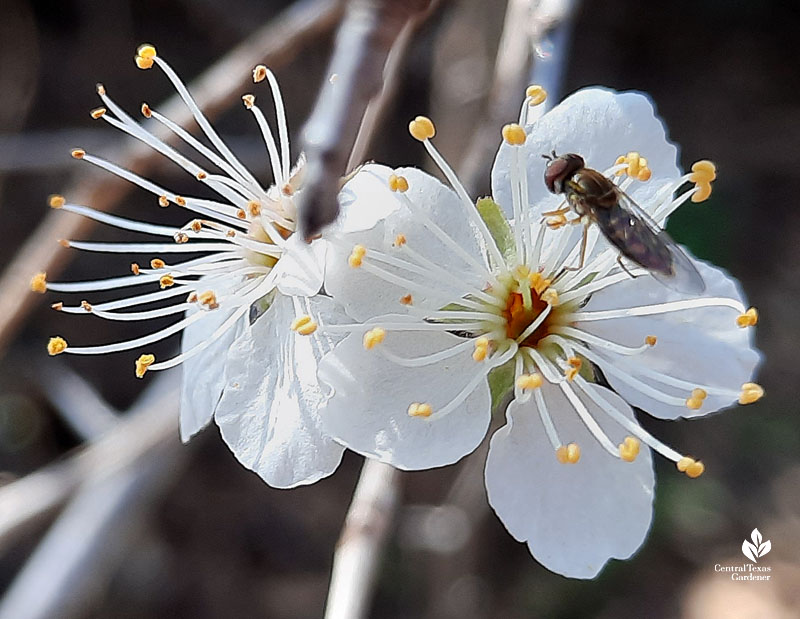
It’s been a rough 10 days on our trees, and as I wrote this, another broken live oak limb slid from its perilous perch on the roof. But last week’s icy Mexican plum flowers? Good as new! This time, their little “ice cubes” protected them, ready to feed hungry bees and hover flies.
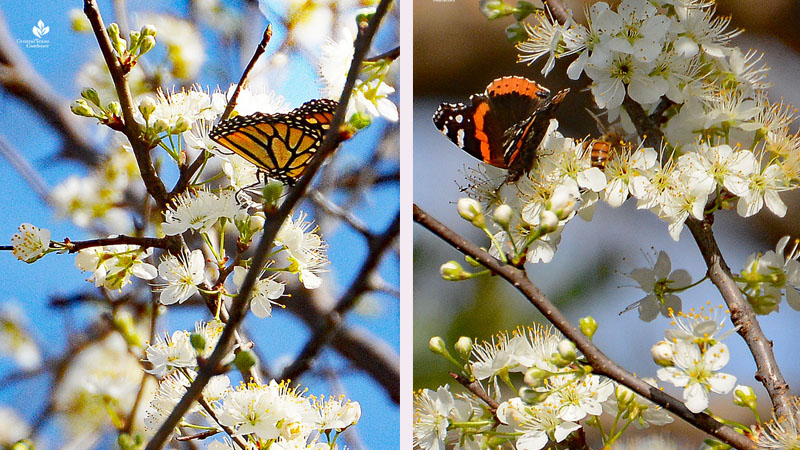
I spotted a few butterflies floating around, though not a crowd. Last year, monarch and red admiral butterflies were sparse after ongoing drought and untimely freezes that diminished their food supplies.
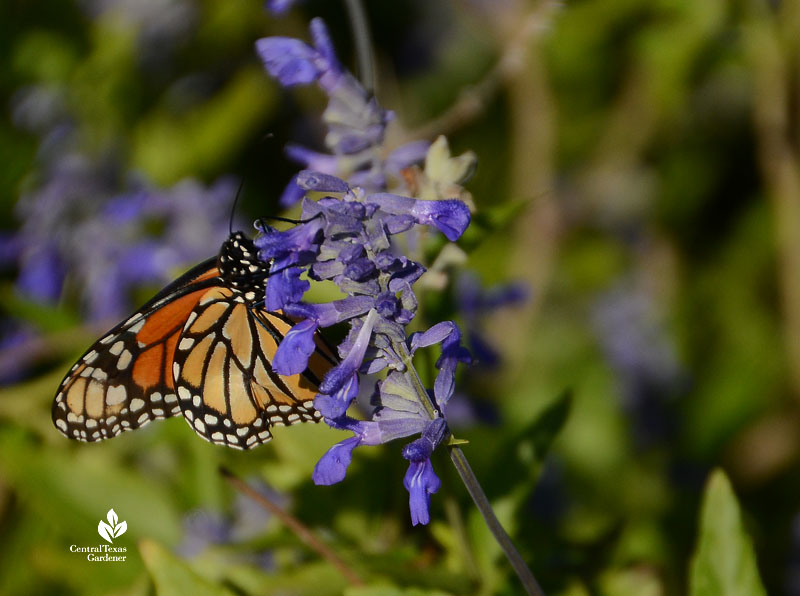
Did you know that monarch butterflies leaving Mexico in March are not the same ones that return in fall, or even the ones that we’ll see in our gardens and around town? Last October, when I spotted this one on Salvia farinacea ‘Henry Duelberg’, fueling up for the next leg, I wondered where it started its life cycle.
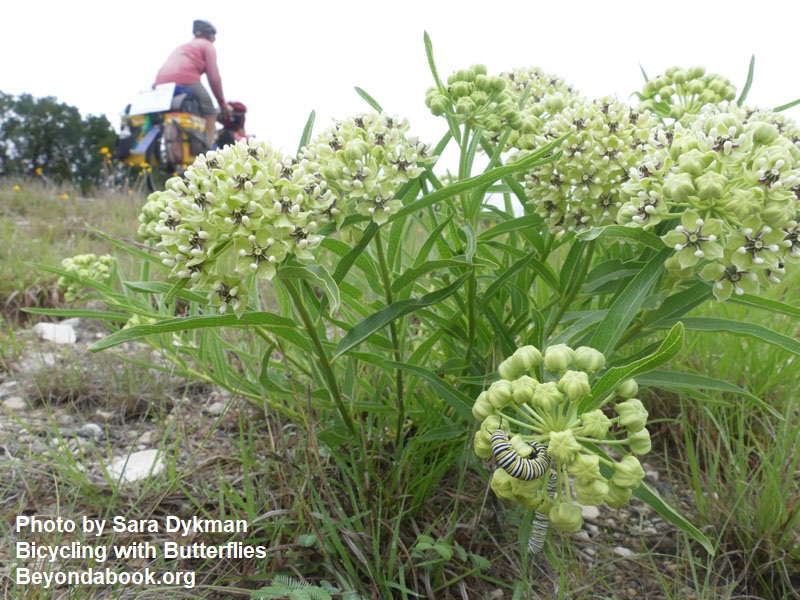
The monarchs coming through Texas in March lay their eggs on milkweeds (their only host plant). Then they die. The eggs hatch into caterpillars that pupate into chrysalids and emerge as adults.
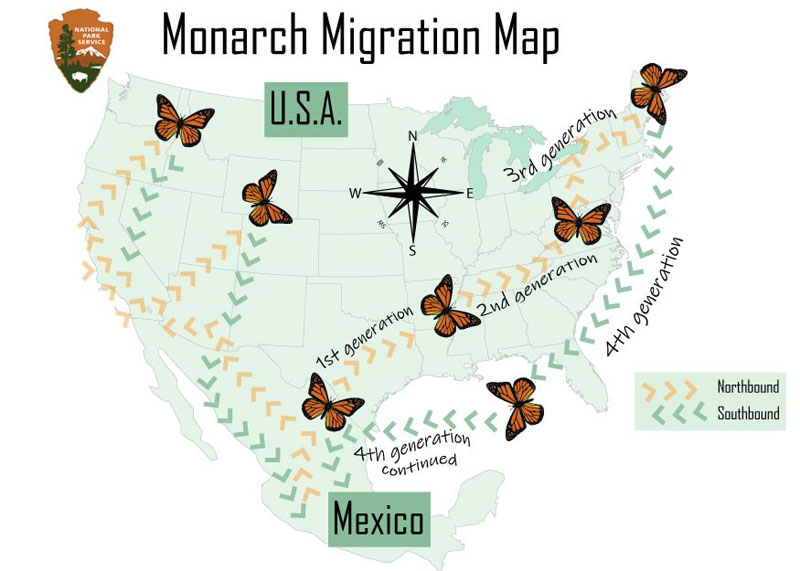
Then, they hit the road where the cycle repeats many times on the flight to Canada and back. The butterfly arriving in Mexico next fall could be the great-great-grandchild of that original migrant.
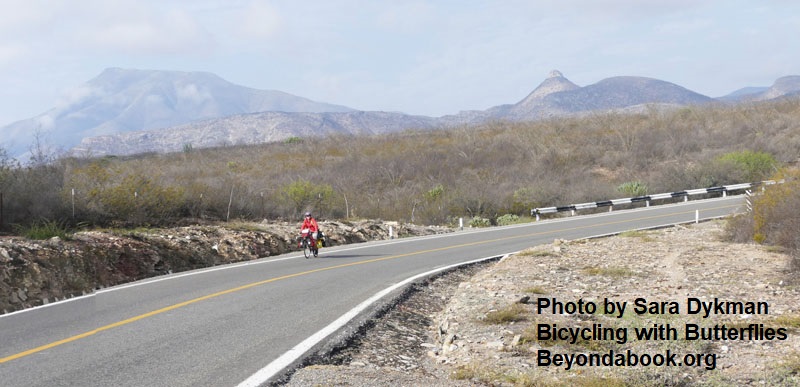
To chronicle their multigenerational journey, Sara Dykman pumped the pedals on a cobbled together bicycle to tell their story—and of all wildlife—that’s losing habitat. Her trek illustrates how three countries connect as stewards to help endangered insects, spiders, birds, mammals, reptiles, and amphibians. All creatures great and small, really, that contribute to the food web in a balanced, healthy ecosystem.
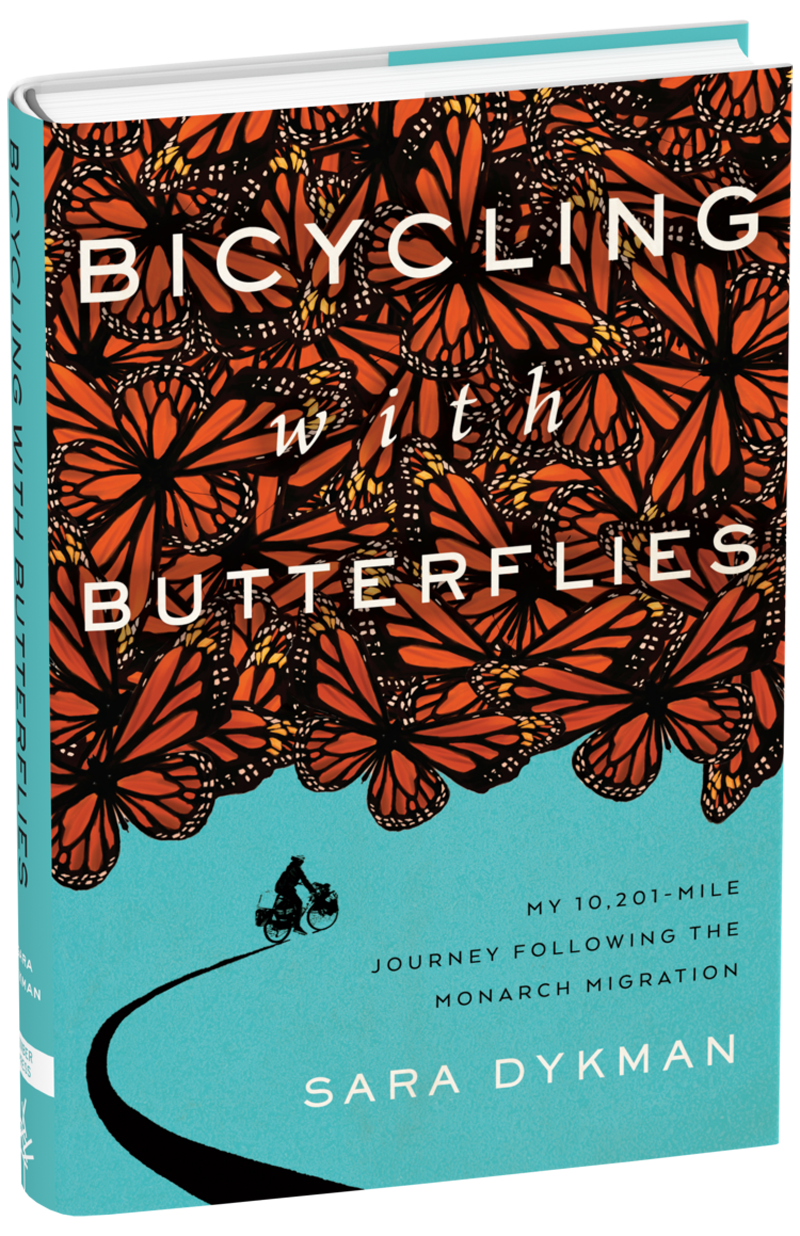
She documented her solitary 10,201-mile journey in Bicycling with Butterflies, a real-life adventure story of bravery, commitment, friendships, hardships, plain old spunk, and self-discovery. Can you imagine living for months on what you could haul on a bike? No smartphone. Often no internet connection, shower, or market in sight through rain, brutal heat, and freezing cold. Just like the monarchs.
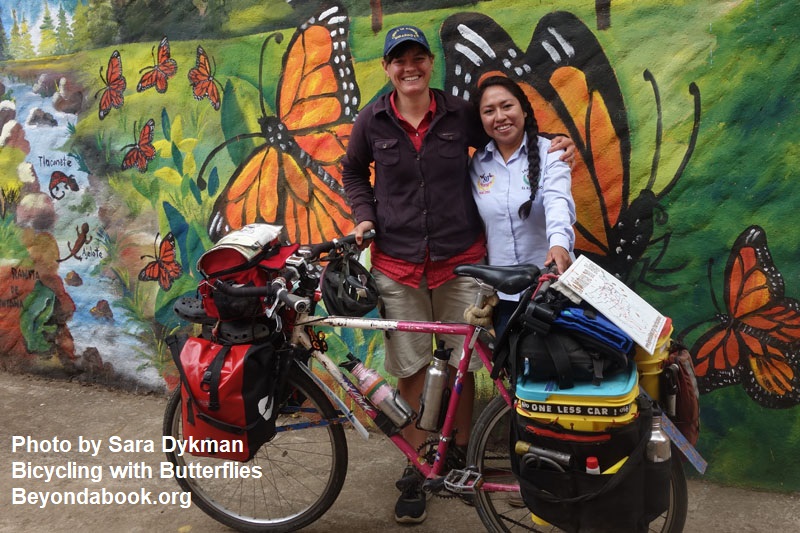
Starting from the El Rosario Monarch Butterfly Preserve in Michoacán, Mexico in March 2017—sometimes with unreliable maps or no map at all—she kept her eyes on the true road ahead. “The goal of my butterfly bicycle trip was to be a voice for the monarch and to really tell people that they need our help. The monarchs need us to share our yards with them. And of course, halfway through my trip, I realized I had a lot to say and I had a lot of opinions. And often I was a little, I was very angry. I shouldn’t say a little. I was very angry at the state of the planet and how much we’ve stolen from the monarchs and how we just refuse to share,” she told us.
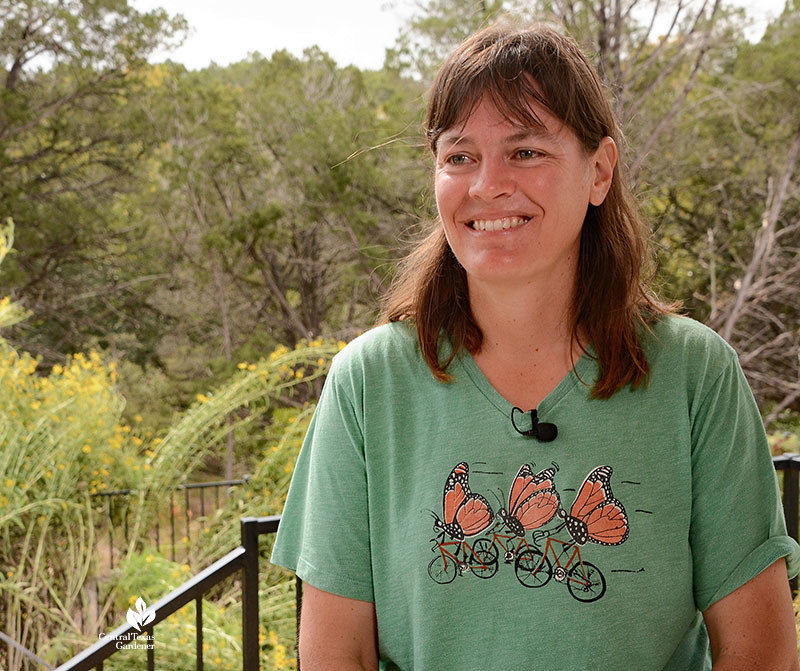
Last October, we met up with Sara when she came through Texas on her way back to Michoacán for further research about roosting monarchs. Kathleen Scott, a native plant/wildlife gardener in New Braunfels, hosted Sara in her home and arranged a talk to the New Braunfels Native Plant Society. Kathleen and I have swapped resources for years, so I was thrilled when she arranged the interview in her garden.
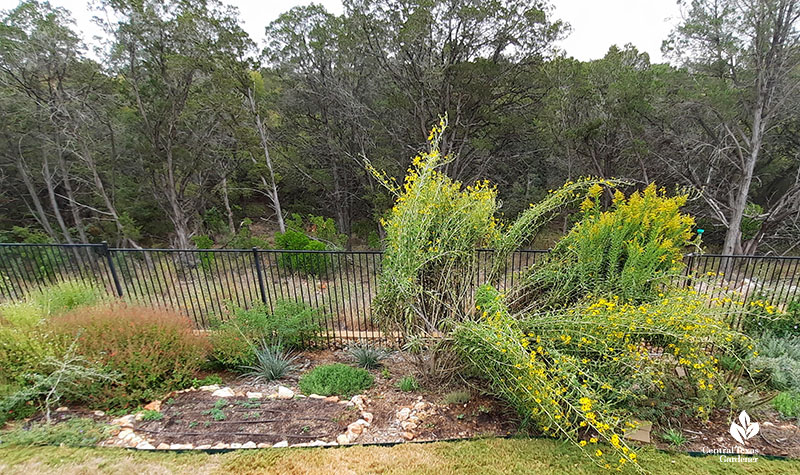
She and husband Denny only started their garden a year ago, but already it’s a hit on the habitat highway.
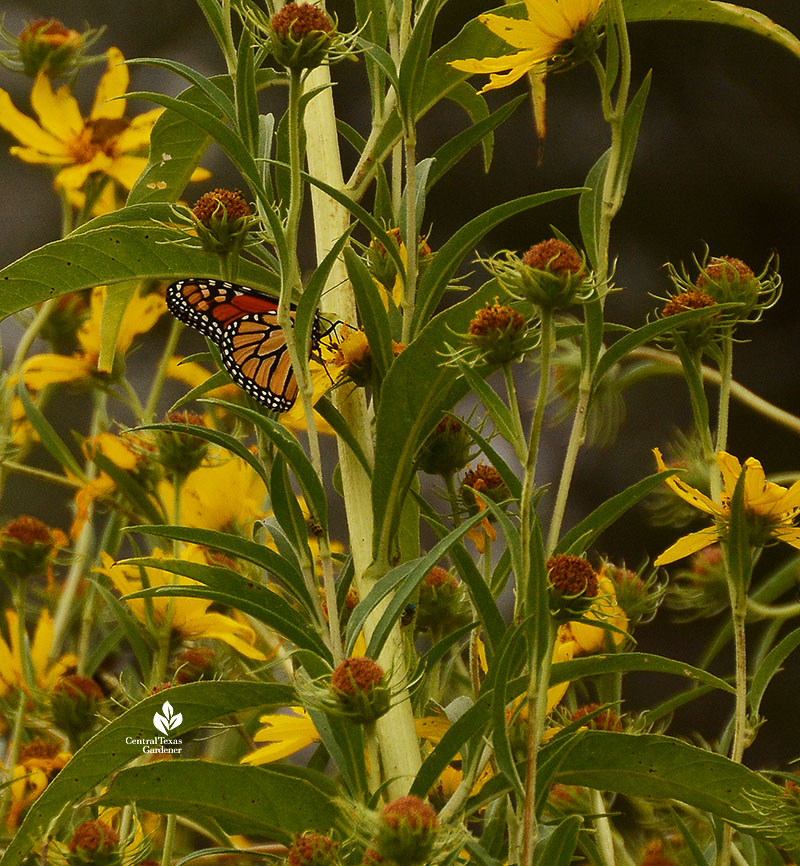
Monarchs and queen butterflies dashed around the native Maximilian sunflower, so laden with nutritious blossoms that it flopped over.
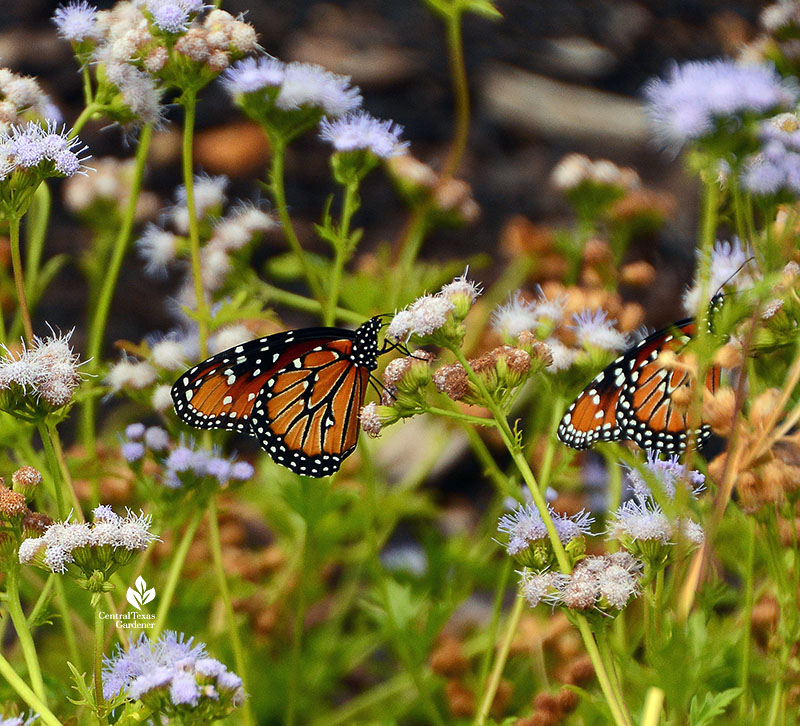
Queen butterflies absolutely cannot resist Gregg’s mistflower (Conoclinium greggii), a perennial that blooms in fall but sometimes at other times, too. Here’s how to tell the difference between queen and monarch butterflies.
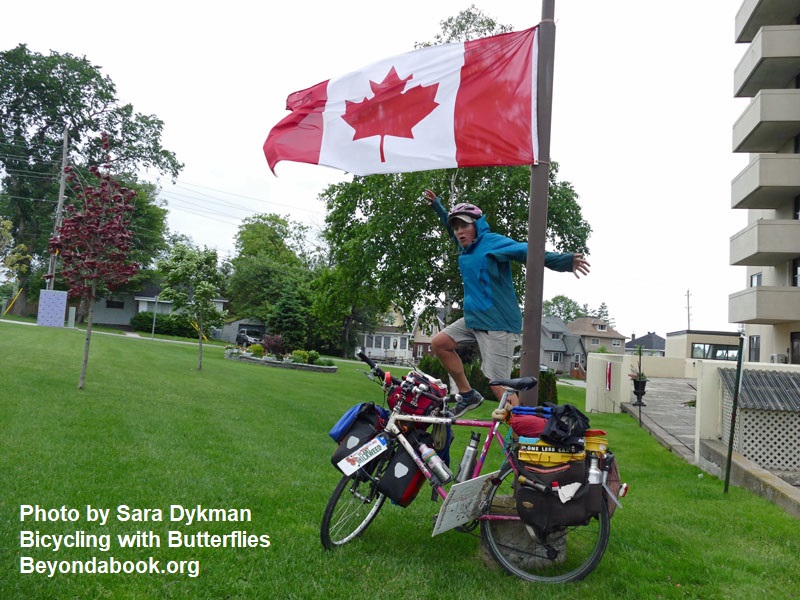
One of Sara’s favorite things about monarchs is how they connect us all. “So often a person will be gardening in their yard and they’ll have just a small little garden and it can feel a little hopeless, right? Like, how is this little garden contributing to this huge problem?” she said.
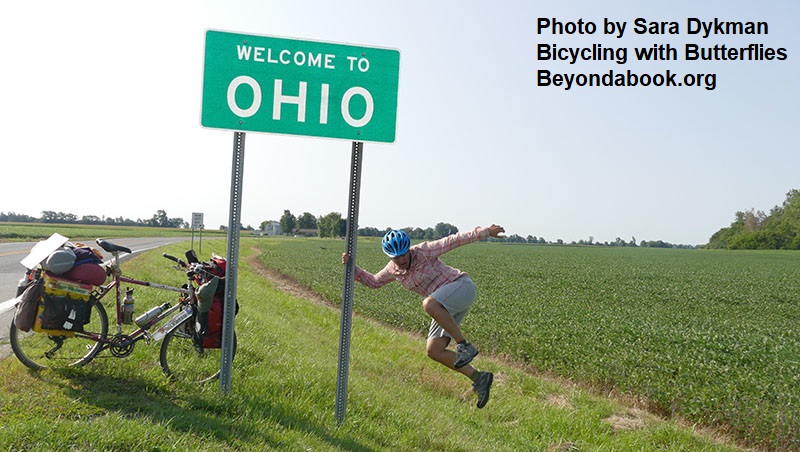
“But I was able to bike between all these gardens and I was able to see, wow, that garden plus that garden and plus that garden adds up. And I’ve actually come to see the monarch as sort of a symbol for this idea that small is big. . . If all you can do is go outside, they’re going to grace you with their presence and everyone can help, which is not something we can do for a lot of animals.”
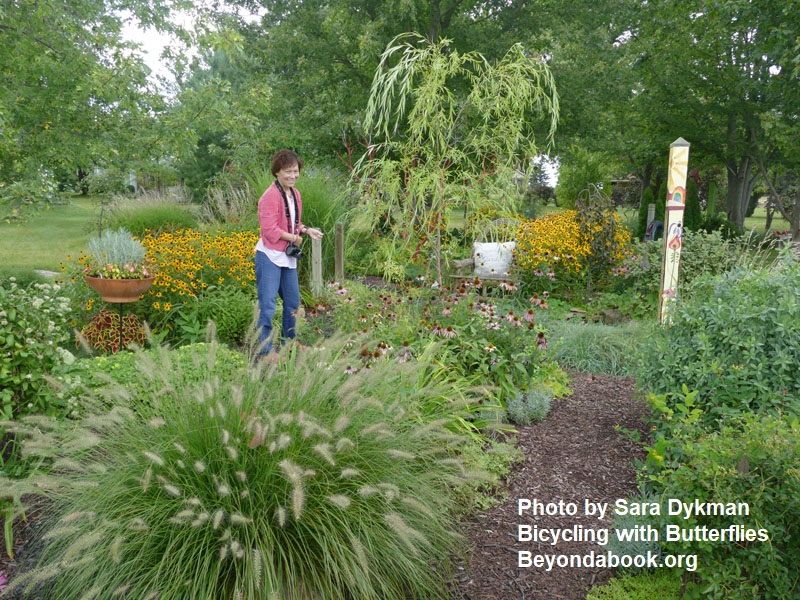
In Ohio, wildlife gardener Kylee Baumle–a friend I met online and in person over the years–hosted Sara in her home and set up talks with local schools.
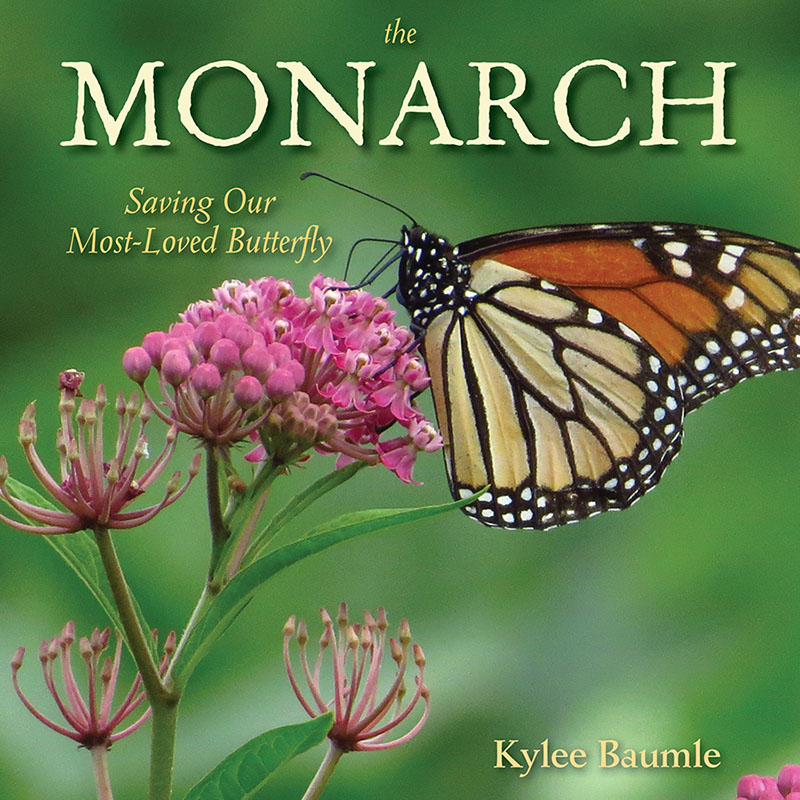
I followed Kylee online as she wrote her remarkable book, The Monarch: Saving Our Most-Loved Butterfly. She and Sara forged their relationship on their journeys to Mexico’s monarch sanctuaries.
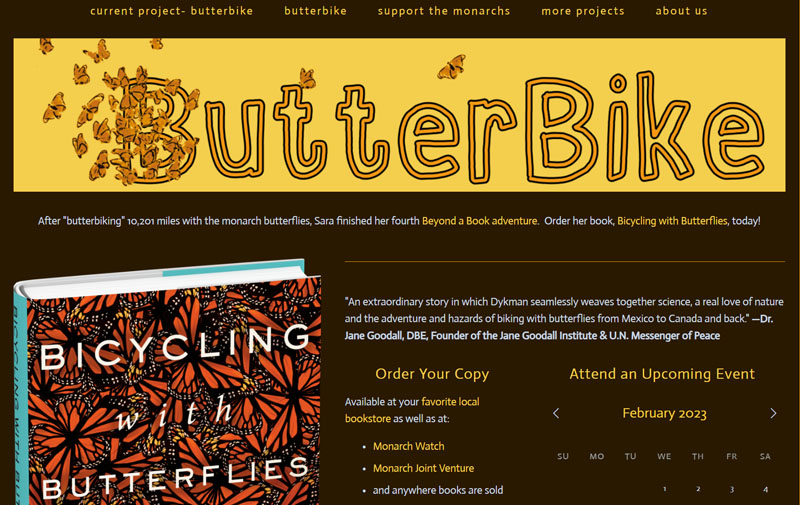
Sara’s Butterbikes is just one of her adventure-linked projects in Beyond a Book where she connects real-time adventures to classrooms. On her 2017 trip, she talked with over 9000 people, along with hundreds of interviews and thousands of roadside encounters.
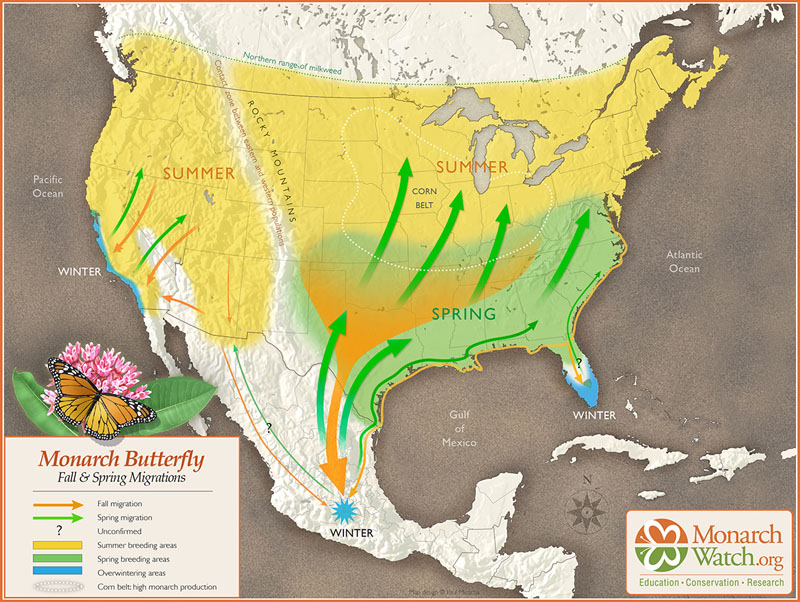
In Bicycling With Butterflies, she connects us to the science behind migration and how butterflies know when to go and when to return. She addresses the concerns about tropical milkweeds, life cycle details, and how organizations like Monarch Watch help us get involved.
Her journey is a cultural one, too, that stretches from horse-pulled vegetable garden furrows to urban high-rises, and from flattened habitat to nurturing wildflower growers (including Texas-based Native American Seed), school gardens, and home gardens big and small.
She tackles walls of attitudes, social and racial injustice, and the fears we all have sometimes when we worry that our mission roadmaps are askew. It’s a book so powerful that I had to put it down several times because my heart was breaking.
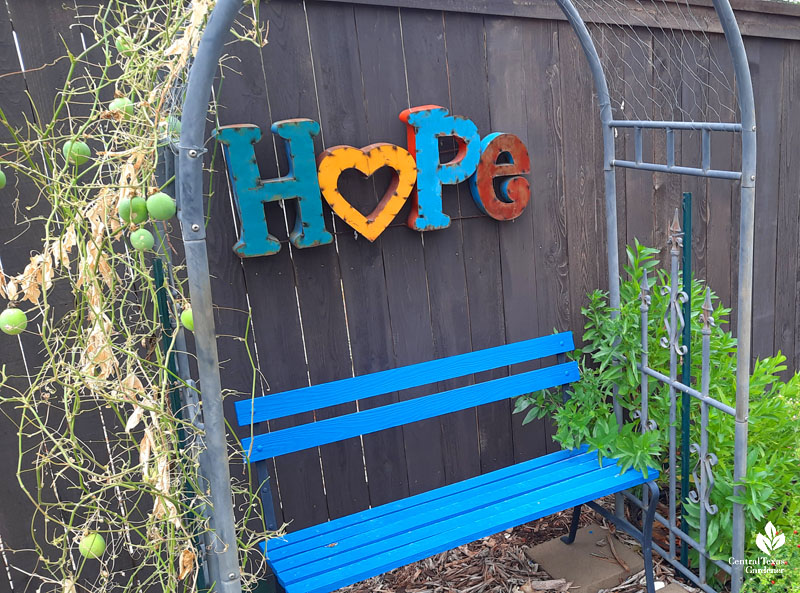
And then, she uplifts us with so much joy and encouragement that we look around our gardens and say, “I can do this!”
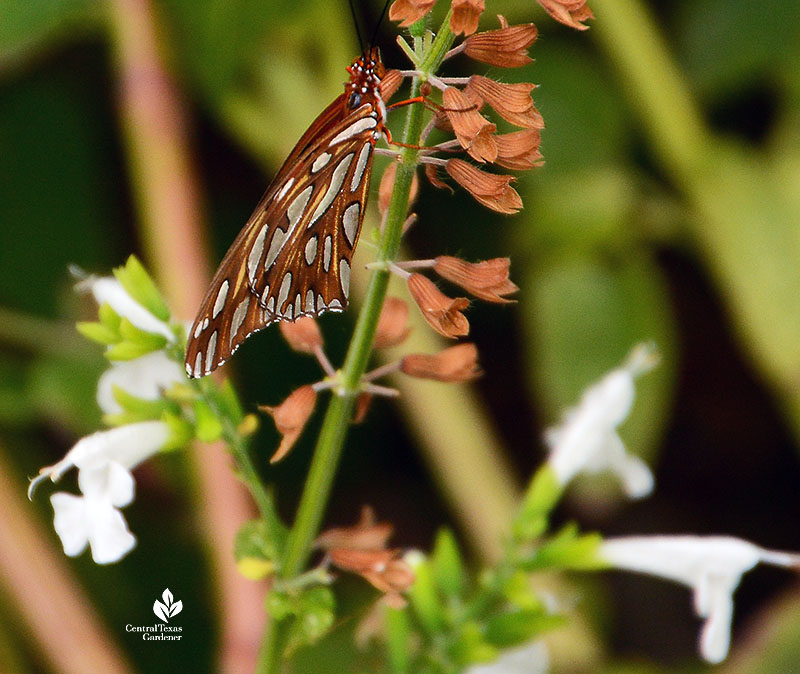
In just one season, Kathleen Scott’s native passion vine fed generations of Gulf fritillary caterpillars to populate her garden with stunning adults. The passion vine will grow new leaves in spring.
Sara’s hope and vision is “That we can start to see the world and share the world with monarchs, and we can share the world with cyclists. And we can also share the world with people that don’t look like me, with people of color that might feel too scared for a good reason to camp behind a church. I think the monarchs helped me see that. And I think the more we can see and the more we can see the world through the perspective of different people and different animals and different plants, the healthier the world will be for everyone.”
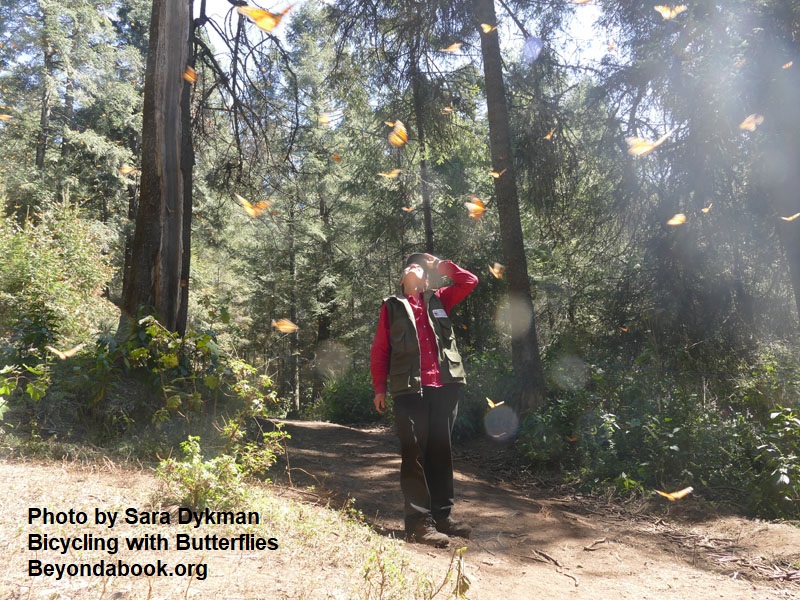
Find out how to support her research project, check out her journey’s blog and pictures, and learn how to schedule a talk. And, I promise you, reading Bicycling with Butterflies will be the ride of your life!
Here’s our story in Sara’s own passionate words.
Thanks for stopping by! Linda

